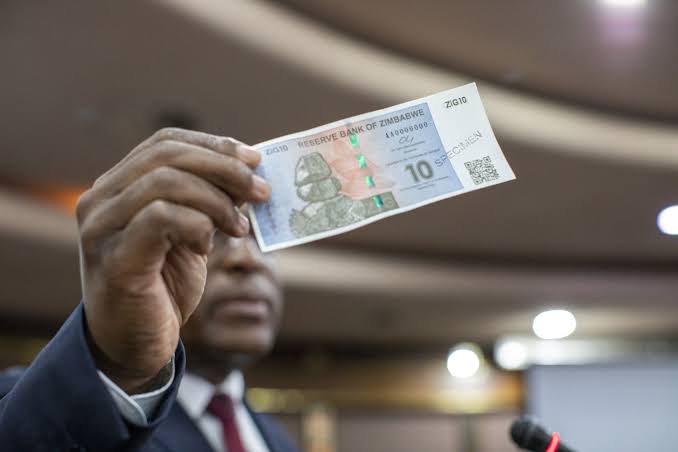Zimbabwe has made history by becoming the first country to launch a new currency backed by gold, aiming to combat rampant inflation and stabilize its struggling economy. The move comes as the country grapples with soaring inflation rates and a depreciating national currency.
Dubbed the ZiG, short for Zimbabwe Gold, the new “structured currency” was unveiled by the country’s central bank on Friday. Reserve Bank governor John Mushayavanhu announced the introduction of ZiG as a replacement for the depreciating Zimbabwean dollar, which has seen a drastic decline in value over the past year.
Mushayavanhu emphasized that the ZiG would be “fully anchored and fully backed” by a diverse basket of reserves, including foreign currency and precious metals, with gold playing a central role. The introduction of the new currency is aimed at simplifying financial transactions and restoring confidence in Zimbabwe’s monetary system.
Also, read: Kaizer Chiefs Defender Luke Fleurs Fatally Shot in Carjacking Incident
 The new banknotes, ranging from 1 to 200 ZiG, were presented as part of the monetary policy statement. The decision to introduce a gold-backed currency comes amid a steep depreciation of the Zimbabwean dollar against major currencies, with the official exchange rate hovering around 30,000 against the US dollar, and even higher on the black market.
The new banknotes, ranging from 1 to 200 ZiG, were presented as part of the monetary policy statement. The decision to introduce a gold-backed currency comes amid a steep depreciation of the Zimbabwean dollar against major currencies, with the official exchange rate hovering around 30,000 against the US dollar, and even higher on the black market.
Zimbabwe’s economy has been plagued by high inflation rates, which reached 55 percent in March, according to official data. This economic instability has exacerbated the challenges faced by the country’s 16 million citizens, including widespread poverty, high unemployment, and the impact of severe droughts induced by the El Nino weather pattern.
The introduction of the ZiG marks a significant step in Zimbabwe’s efforts to address economic challenges and restore stability. However, the success of the new currency will depend on effective implementation and sustained measures to address underlying economic issues.

